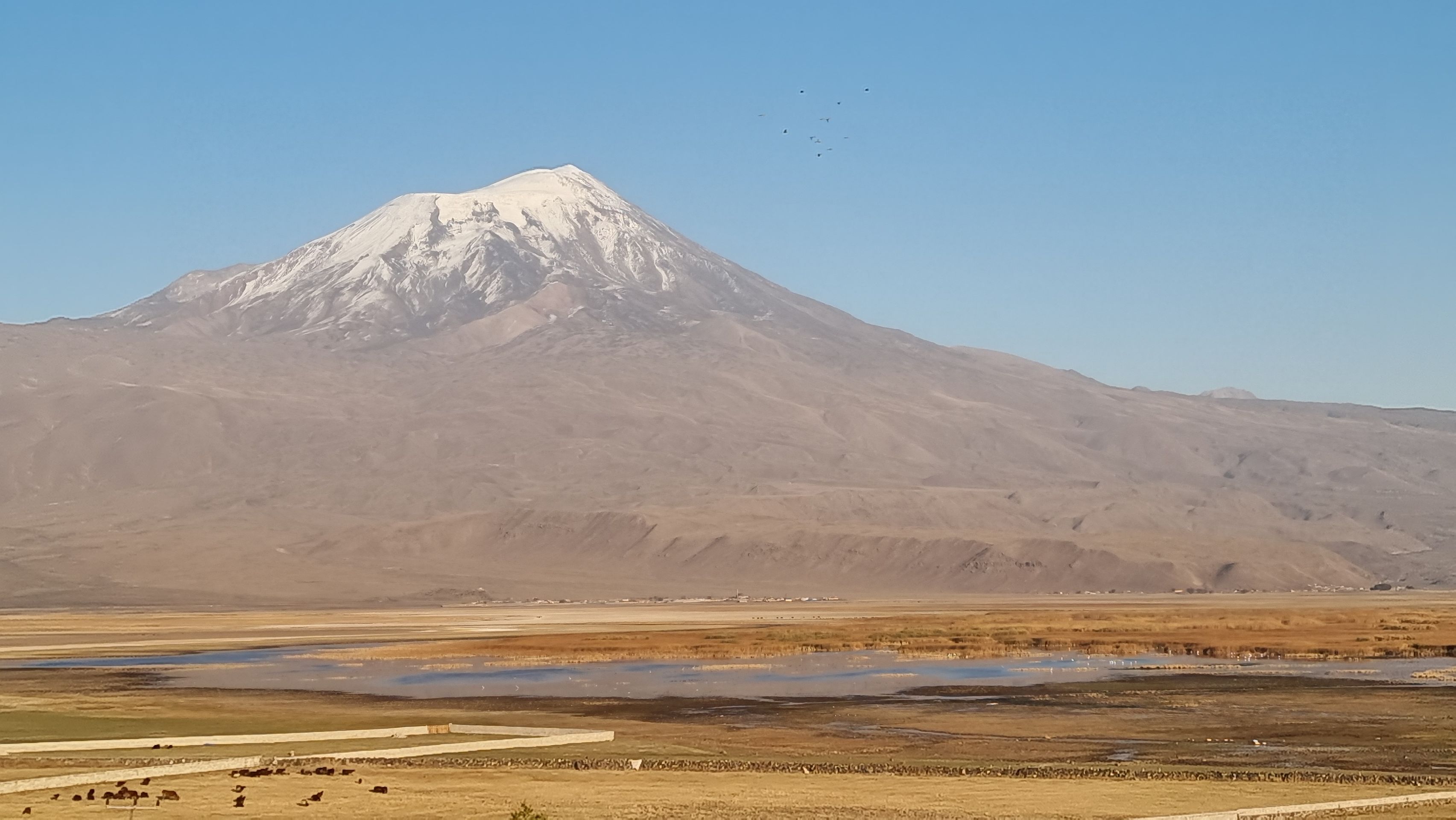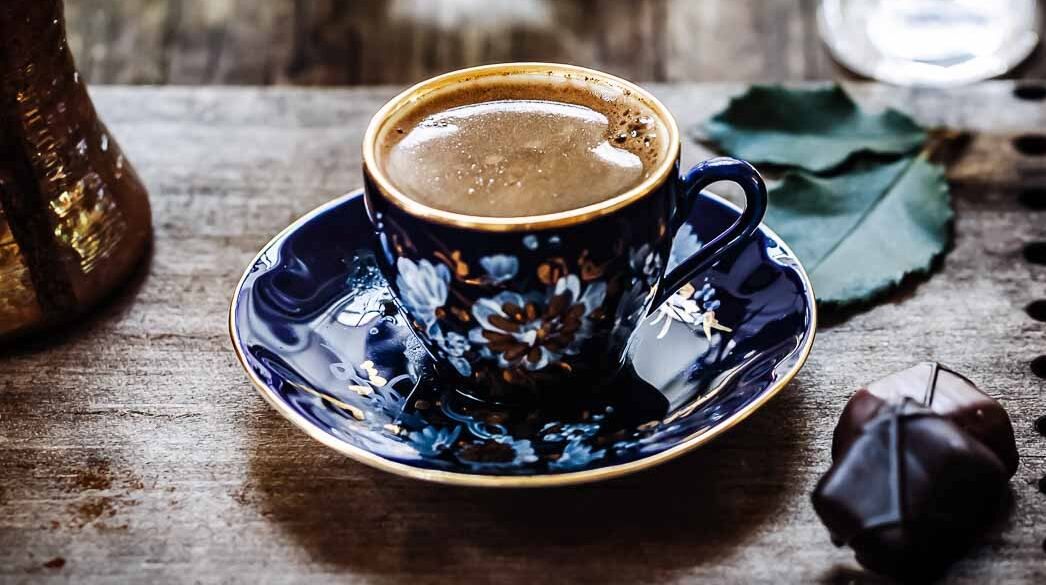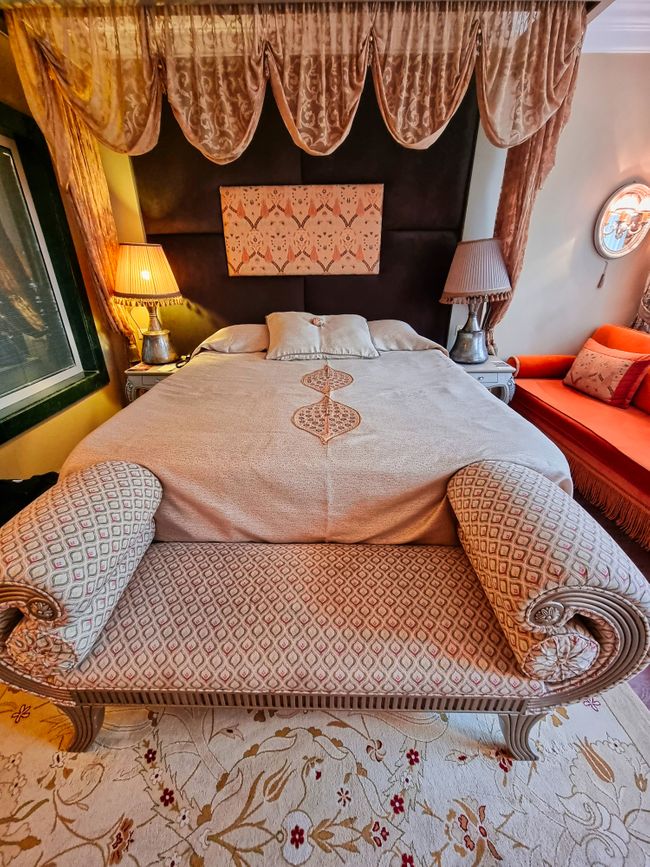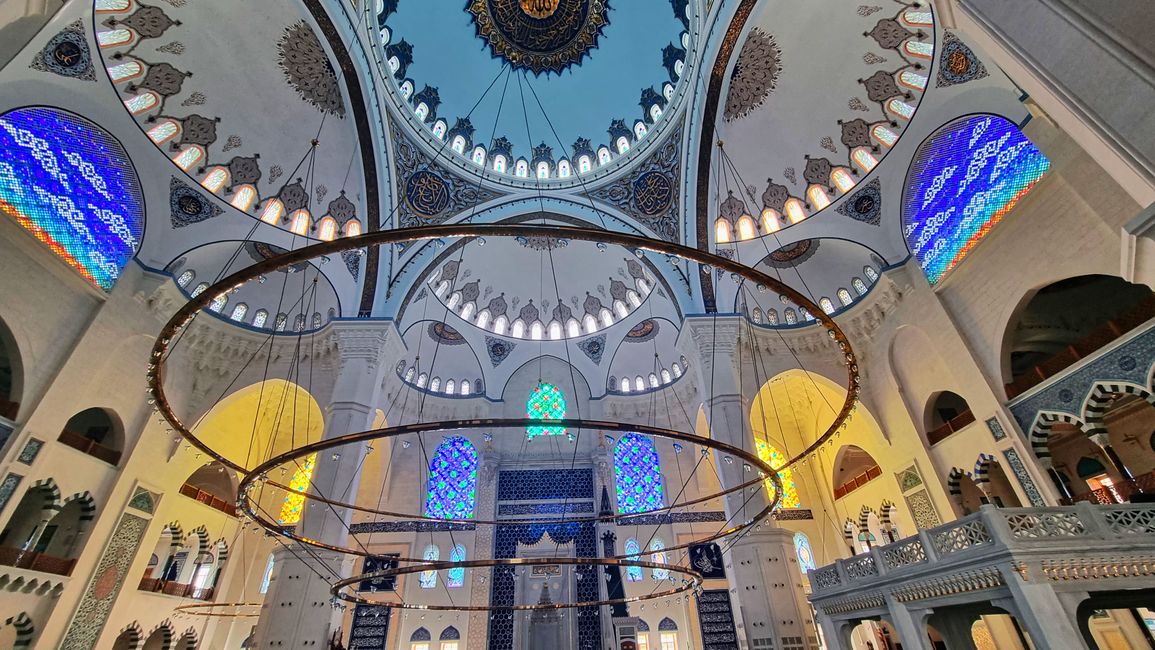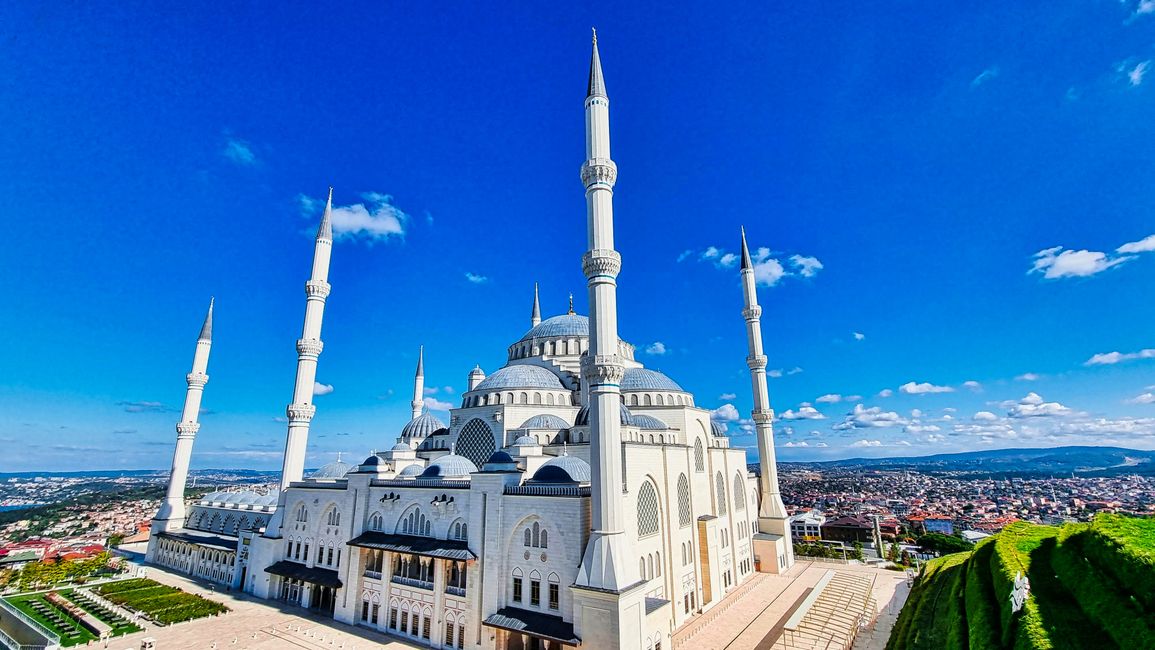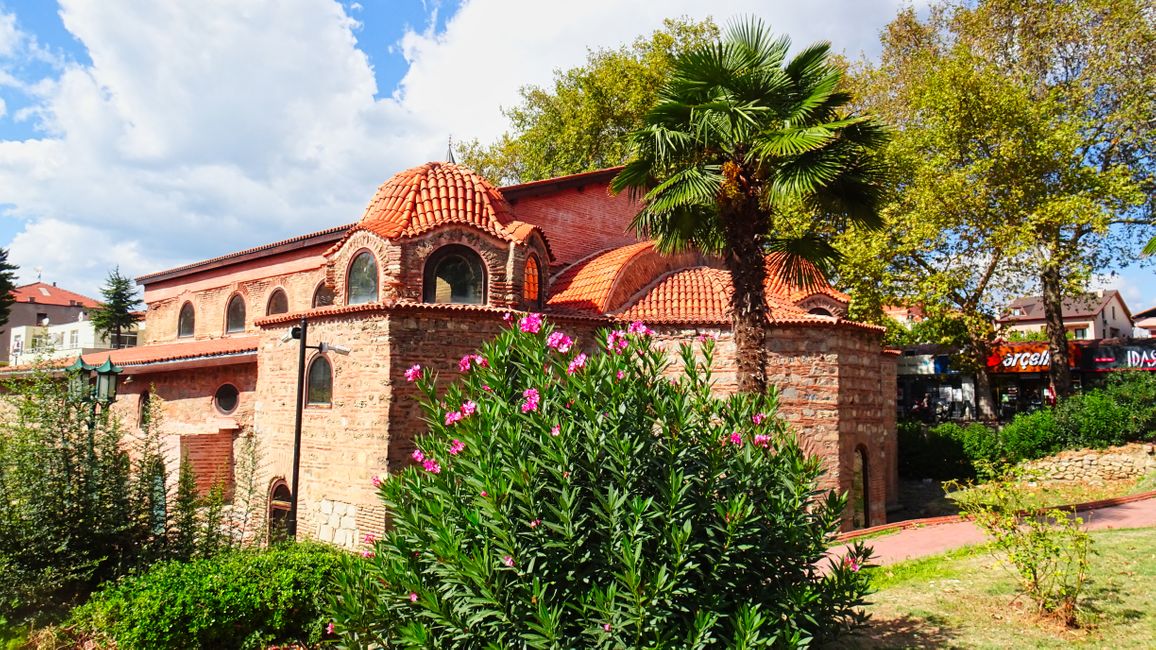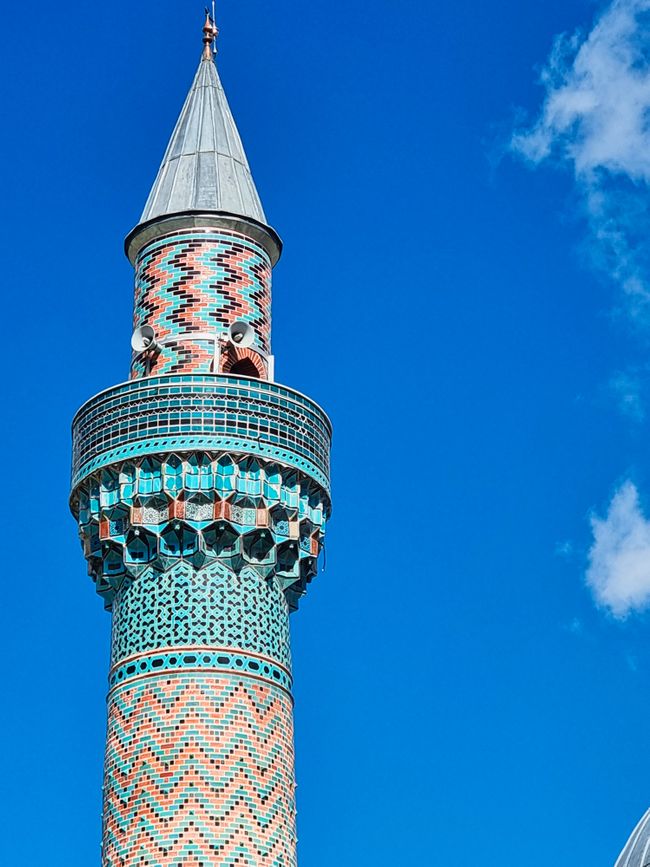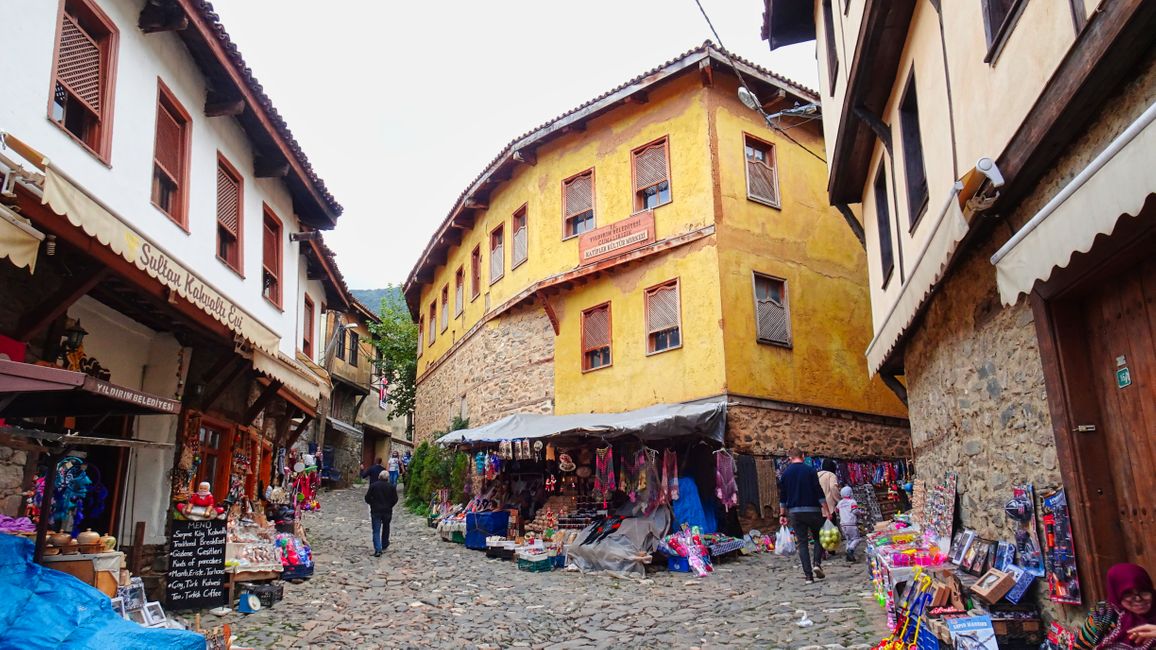Day 3 - Don Curry goes Ottoman
ޝާއިޢުކޮށްފައިވެއެވެ: 05.10.2021
Don Curry considers himself a simple person. Even the simple things in everyday life can bring him deep satisfaction. But sometimes he wishes for something special, something extraordinary, something beyond the norm. Especially when traveling, he indulges in eccentricity and chooses hotels that are more than just an ordinary overnight stay. He fondly remembers the treehouse in India, the Maharaja's palace in the same country that became a hotel, the typical old town house in Essaouira, or the bungalow in the middle of the Ecuadorian rainforest. For his trip to Anatolia, he had booked several historically unique accommodations. One of them was waiting for him tonight...
But first, the day started just as the last one ended: with mosques. After leaving the small hotel on the Black Sea, he soon found himself on the highway again, but now heading towards Istanbul. Here, the dream of empty highways quickly faded; the closer he got to the giant city, the more the traffic intensified until Don Curry finally experienced his first Turkish traffic jam, which soon turned into extremely slow-moving traffic. This gave him the opportunity to see his first goal of the day from afar as he slowly crossed the middle of the Bosporus Bridge: the Camlica Mosque, commissioned by the current Sultan, Egoman. Like all his projects, he did not want to be accused of modesty or frugality. It was all about superlatives!
Don Curry already noticed this during the approach. In order to reach the mosque, which was planned on a mighty hill in the Üsküdar district, kilometer-long tunnels had to be dug under the district and into the hill. Shortly after the tunnel, the entrance to a massive underground parking garage began, which could accommodate thousands of vehicles on four extensive levels. Don Curry drove up to the top floor and parked directly at a pedestrian exit – in total, there were perhaps a few dozen cars in the immense halls. But then Don Curry was truly perplexed: the pedestrian exit of the parking garage also served as the direct entrance to the mosque. A sign made it clear that shoes had to be taken off. Numerous donors with plastic bags were ready so that all visitors could comfortably carry their shoes with them. Don Curry has certainly experienced many things while traveling, but he had never been forced to leave an underground parking garage in his socks. He then ascended another floor shoeless via stairs and suddenly found himself in the mosque, which was completed just a few years ago. Yesterday, he had considered Sinan's building in Edirne to be gigantic; the interior that now opened up before him could probably fit the Edirne Mosque inside four times. Everything here was oversized; everything was meant to impress – from the numerous colored windows to the precious materials and decorations on the walls, pillars, and domes, to the turquoise carpet the size of a football field. When Don Curry finally left the mosque to view the radiant white building from the outside, he immediately noticed another detail: this super mosque naturally needed six minarets – more than almost all the others.
Don Curry noticed two additional peculiarities: there was a tour group with a guide in the mosque, there were a few individual tourists taking pictures, but there were almost no worshipers. Can a room be so large and extraverted that it makes genuine prayer and introspection almost impossible? Don Curry made his second observation much more positively: there were no visibly separated areas for women. They could move freely in the mosque. Perhaps because a woman designed and built the Camlica Mosque?
When Don Curry returned to his car, he found it occupied: two young kittens had made themselves comfortable on the still warm hood and were dozing off. Although they woke up immediately when Don Curry kindly suggested that they leave his car because he had to go now. However, they just looked at him with interest, probably understanding only Turkish. It was only when Don Curry actually started the engine that they leisurely moved to the neighboring car.
Don Curry left the pet-friendly parking garage, drove through another long tunnel, and soon found himself in another traffic jam on the highway leading out of Istanbul. His next destination was a small town with a great history: Iznik, the former Nicaea, the site of the important Christian council that created the basis for the still valid Nicene-Constantinopolitan Creed. In the middle of the old town, Don Curry quickly found a guarded parking lot only 50 meters away from the Hagia Sophia, the church where the council met at that time. After the excessive dimensions that Don Curry had just experienced in Istanbul, this late antique church looked almost like a small chapel; however, it had long been converted into a mosque and had gained a small minaret. The difference in floor height between the present-day city and the Hagia Sophia already made it clear how old the Hagia Sophia actually was: one had to descend almost 3 meters to reach it. Both on the outside and inside, one could feel the venerable age of the building, but apart from a few almost faded remnants of frescoes, almost nothing of the old furnishings had survived. The Mihrab also appeared peculiar; it had to face Mecca and was therefore built completely asymmetrically and diagonally into one of the side walls.
Don Curry made his way through the pedestrian zone of Iznik, heading towards his next destination, the Green Mosque. Today, there was a market in Iznik, and the stands lining both sides of the entire pedestrian zone were overflowing with masses of potatoes, onions, and lemons. The Green Mosque from the end of the 14th century shone primarily with its minaret - literally, because this minaret had been almost entirely decorated with green and blue faience tiles, for which Iznik was once famous. Today, the ceramic craft is slowly experiencing a revival. As a little motivational boost, Don Curry bought 2 large coffee cups on the way back to the car, which cost less than 2.50 euros in total; and he ordered his first Turkish pide, the local pizza variant, which is oval in shape rather than round, at a pide House. For just under 2.50 euros, he obtained a pide generously topped with minced lamb and cheese, which was prepared in a wood-fired oven right in front of his eyes in a few minutes, and which he then took with him for a snack on the go.
After strengthening himself with pide on the roadside, Don Curry finally reached Bursa, another million-city in Turkey that was once supposed to be the capital of the Seljuks for a long time before they conquered Constantinople and later became famous as the Ottomans. In Bursa, the progenitor Osman is buried. However, he and his clan would only attract Don Curry's attention the next day. Today, he instead drove to the small village of Cumalikizik, which is now located directly on the outskirts of the sprawling Bursa. Cumalikizik is somewhat of a Turkish Rothenburg ob der Tauber, a place where an outdated past has been preserved: colorfully painted half-timbered houses line rustic cobblestone streets that are hardly suitable for car traffic; an idyllic cemetery and a small village mosque complete the ideal image of an Ottoman village from the last centuries. It is no wonder that the village has repeatedly served as a backdrop for Turkish historical films and TV series from the "good old days." But then UNESCO stepped in and declared Cumalikizik, together with the Sultan's buildings of Bursa, a World Heritage Site in 2014. This sealed the end of any authentic idyll. During his walk, Don Curry experienced a village where almost all buildings serve as guesthouses, restaurants, or shops for Turkish handicrafts "made in China." As soon as the streets become slightly wider, additional stalls have been set up in front of the houses. Certainly, Cumalikizik has been wonderfully restored, and the houses compete with each other in bright colors, but the unbridled commercialization destroys any flair that the once remote and forgotten little village used to exude. Did UNESCO want this?
Disappointed, Don Curry left the now uncultivated cultural heritage and actually wanted to visit a few more sights in Bursa. But the heavily congested main artery prevented that extensively. So Don Curry simply joined the end of the line and slowly rolled towards his hotel meter by meter. He had booked 2 nights at the Termal Hotel Gönlüferah, not because of the hotel's own thermal spring and spa treatments, but because this over 130-year-old hotel offered rooms in Ottoman style: terribly plush, with antique furniture and bathroom fittings, pastel colors, oriental patterns, and a kind of four-poster bed that is about 1.20 meters high. Certainly, all of this is by no means to Don Curry's taste, but why not become an Ottoman for 2 nights?
In the hotel restaurant, Don Curry ordered Albanian liver with dill and sumac, as well as grilled chicken breast in walnut sauce, along with an Efes beer and a Raki afterward. This would bring enough weight to his Ottoman four-poster bed...
ޖަވާބު
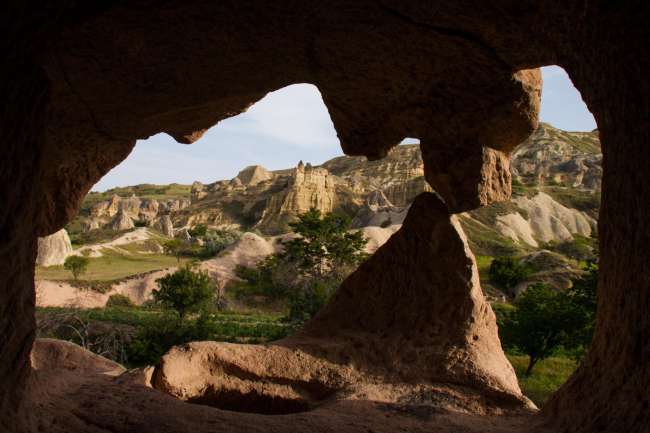
ދަތުރު ރިޕޯޓްތައް ތުރުކީ
